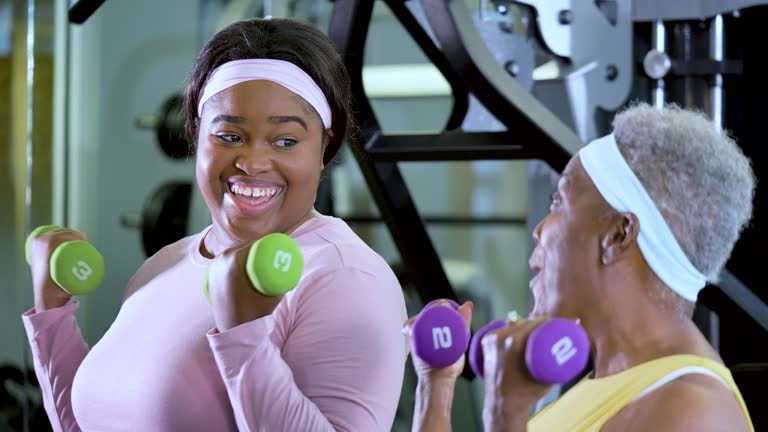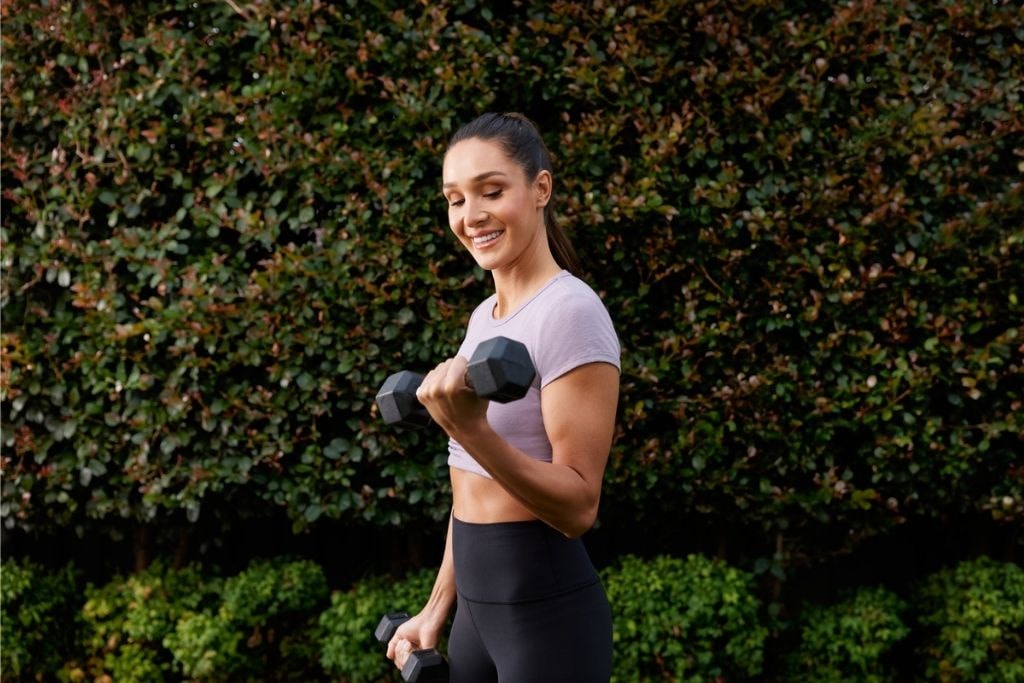Joint-Friendly Workouts: Transform Your Arms with Bicep Curls

The beauty of bicep curls lies in their adaptability, making them an excellent choice for individuals of all ages, including seniors. With options ranging from lightweight dumbbells to resistance bands, this exercise can be customized to suit various fitness levels and goals.
For seniors, bicep curls provide a low-impact way to build strength, maintain joint health, and improve arm function for everyday activities. In this guide, we will explore the benefits of bicep curls, variations that cater to seniors and other specific needs, and tips to perfect your technique for joint-friendly gains.
This exercise offers an opportunity to develop stronger, more toned arms without unnecessary strain. Bicep curls target the biceps muscles on the front of the upper arms, helping to build arm strength effectively.

When performed correctly, they strengthen the arms while minimizing stress on the joints, an important consideration for older adults. This exercise can be done using dumbbells, barbells, or resistance bands. For seniors, resistance bands offer a gentle yet effective alternative to weights.
Proper form is essential, requiring you to keep your elbows close to your body and move slowly and deliberately. This approach reduces joint strain and directs the effort to the muscles.
Including bicep curls in a senior’s workout routine can improve arm strength, enhance the ability to perform daily tasks, and support overall well-being. Starting with light resistance and gradually increasing it over time ensures steady progress while reducing the risk of injury, making bicep curls a safe and effective option for seniors.
Key Takeaways
- Focus on slow, deliberate bicep curls to effectively target muscles while reducing joint strain, particularly important for seniors.
- Seniors should begin with lighter weights or resistance bands, gradually increasing resistance for safe and steady strength development.
- Incorporate variations like hammer or preacher curls to work the muscles differently while maintaining joint-friendly techniques.
- Light stretches and arm circles before starting bicep curls help seniors protect joints and reduce injury risks.
- Regular bicep curls can enhance seniors’ arm strength, improve grip, and aid in everyday tasks, promoting independence and well-being.
Understanding Bicep Curls

Bicep curls are a key exercise for building arm strength. They target the muscles in the front of your upper arms and can be done with various equipment.
Anatomy of the Biceps
Your biceps are made up of two main parts: the long head and the short head. These muscles work together to flex your elbow and rotate your forearm. When you do bicep curls, you mainly use these muscles, but other muscles, like your brachialis and brachioradialis, also help out.
The biceps attach to your shoulder blade and to your forearm bones. This setup lets them move your arm in different ways. When you curl a weight, your biceps contract and shorten, pulling your forearm up towards your shoulder.

Benefits of Bicep Curls
Bicep curls are a great way for seniors to strengthen their arms, making daily tasks like carrying groceries or lifting objects easier and more manageable. Strong biceps also provide support for other movements, such as pulling or rowing, which are essential for maintaining independence.
Regularly performing bicep curls can improve grip strength, a vital skill for seniors to maintain their ability to perform routine activities. Strengthening the biceps also balances the arm muscles, reducing the risk of injuries during everyday tasks or exercise routines.
Additionally, seniors can experience a confidence boost through visible progress, like more defined arm muscles. It’s a rewarding sign of dedication and effort toward staying active and healthy.
Types of Bicep Curls
There are many ways to do bicep curls. Here are some common types:
- Dumbbell Curls: Use one dumbbell in each hand
- Barbell Curls: Use a long bar with both hands
- Hammer Curls: Hold dumbbells with your palms facing each other
- Preacher Curls: Rest your arms on a bench while curling
- Cable Curls: Use a cable machine for constant tension
You can do these by standing up, sitting down, or even lying on your back. Changing your grip or the angle of your arms can target different parts of your biceps. Try different types to keep your workouts fun and effective.
Executing the Perfect Bicep Curl
Mastering the bicep curl takes practice and attention to detail. Focus on your form, grip, and breathing to get the most out of this exercise while protecting your joints.

Proper Stance and Grip
Start with your feet shoulder-width apart. Keep your back straight and core tight. This stance gives you a solid base for the movement.
For the grip, hold the dumbbells or barbell with your palms facing up. Your hands should be slightly wider than your shoulders. Make sure your grip is firm but not too tight. Don’t lock your elbows. Keep a slight bend to reduce strain on your joints.
Curling Technique
Begin with your arms fully extended, hanging by your sides. Slowly curl the weight up towards your shoulders. Keep your upper arms still – only your forearms should move.
Squeeze your biceps at the top of the movement. Hold for a second, then lower the weight back down slowly. Control is key – don’t let gravity do the work. Avoid swinging your body or using momentum. The focus should be on your biceps doing the work.
Breathing and Concentration
Breathe out as you lift the weight. Breathe in as you lower it. This pattern helps you maintain control and power throughout the exercise. Stay focused on your biceps. Picture them working as you curl. This mental connection can help improve your results.
Keep your movements slow and controlled. Quality reps are better than rushing through a set. Aim for a steady pace that allows you to maintain good form.
Check out this video on how to do a bicep curl the right way.
By: Well+Good
Avoiding Joint Strain

Seniors can build arm strength safely by focusing on proper technique and smart training choices. Using good form, selecting appropriate weights, and including helpful warm-ups in their routine can make bicep curls both safe and effective, while also being gentle on the joints.
Warm-Up Exercises
Start with light arm circles to get your blood flowing. Do 10-15 circles forward, then backward. Next, try wrist rotations. Hold your arms out and twist your wrists in circles 10 times each way. Gentle stretches can also help. Hold each stretch for 15-20 seconds:
- Extend one arm straight out, palm up. Use your other hand to gently pull your fingers back.
- Clasp your hands behind your back and lift your arms slightly.
These warm-ups prep your muscles and joints for the work ahead.
Using the Right Weights
Pick weights that let you do 8-12 reps with good form. If you can’t reach 8, it’s too heavy. If you can easily do more than 12, go heavier.
Start light and add weight slowly over time. This lets your muscles and joints adapt safely. Don’t be afraid to use different weights for different exercises. Your strength may vary depending on the move.
Common Mistakes to Avoid
Watch out for these errors that can strain your joints:
- Swinging the Weights: Use controlled movements. Don’t use momentum to lift.
- Locking Your Elbows: Keep a slight bend at the top of the curl.
- Curling Too Fast: Slow down to feel the muscle working.
- Gripping Too Tight: Hold firmly, but don’t squeeze the life out of the bar.
Remember to rest between sets. This gives your joints and muscles time to recover. Listen to your body. If something hurts, stop and check your form. Pain is not gained when it comes to joint health.
Did You Know?
Enhancing Your Routine
Spice up your bicep curls routine to see better results. Try new techniques, adjust your sets and reps, and gradually increase the challenge for your muscles.
Incorporating Variation
Mix things up to keep your biceps guessing. Try different curl types like hammer curls, preacher curls, or concentration curls. Change your grip width or use different equipment like resistance bands or cables.
Alternate between standing and seated curls. This targets your biceps from different angles. Add in some isometric holds at different points in the curl motion. Hold for 5-10 seconds to really feel the burn.
Don’t forget about your wrists. Include some wrist curls to strengthen your forearms. This will help support your bicep curls and improve overall arm strength.
Repetition and Sets
Find the right balance of reps and sets for your goals. For muscle growth, aim for 3-4 sets of 8-12 reps. If you want to build strength, try 4-5 sets of 4-6 reps with heavier weights.
Rest between sets is key. Take 60-90 seconds to recover. This gives your muscles time to recharge for the next set. If you’re doing supersets, alternate bicep curls with a different exercise to keep your heart rate up.
Listen to your body. If you’re too sore, take an extra rest day. It’s better to come back fresh than to push through pain and risk injury.
Progressive Overload
Gradually increase the challenge to see continued gains. Add a little more weight each week, even if it’s just 1-2 pounds. Or try to squeeze out one more rep than last time.
You can also slow down your reps. Take 3-4 seconds on the way down to increase time under tension. This challenges your muscles in a new way.
Another option is to decrease rest time between sets. Start with 90 seconds and work your way down to 60 seconds over a few weeks. This keeps your muscles working harder.
Recovery and Nutrition

Proper recovery and nutrition are key to building arm strength with bicep curls. They help your muscles grow and prevent injury. Good habits after workouts support your progress.
Post-Workout Care
After completing bicep curls, seniors should take time to cool down with gentle arm stretches. This helps reduce muscle tightness and prevent soreness the next day. If there is any pain or swelling, applying ice for 15-20 minutes at a time can help speed up healing and reduce inflammation.
Rest is especially crucial for seniors to support recovery. Allow at least 48 hours before working the biceps again to ensure proper muscle repair and growth. Prioritizing these steps can help maintain a safe and effective exercise routine.
Importance of Hydration
Drink water before, during, and after your workout. Aim for at least 8 glasses a day. More if you sweat a lot. Water helps move nutrients to your muscles. It also removes waste products from your body.
During a senior-friendly bicep curl session, keep a water bottle within reach. Proper hydration can help prevent muscle cramps, reduce fatigue, and ensure a smoother post-workout recovery, making each exercise session safer and more effective.
Nutritional Support for Muscle Gain
Eat protein-rich foods to help build muscle. Good choices include:
- Chicken breast
- Fish
- Eggs
- Greek yogurt
- Beans
Aim for about 1.6 grams of protein per kilogram of body weight daily. Carbs are important, too. They give you energy for workouts. Choose whole grains, fruits, and vegetables.
Healthy fats support hormone production. Include nuts, avocados, and olive oil in your diet. Timing matters. Try to eat a meal with protein and carbs within an hour after your bicep curls. This can boost muscle growth and recovery.
Integrating Bicep Curls into Your Workout Plan

Adding bicep curls to your fitness routine can boost arm strength. It’s important to plan when and how often to do them for the best results.
Full-Body Workouts vs. Arm Days
You can include bicep curls in full-body workouts or on specific arm days. In full-body workouts, do bicep curls after larger muscle group exercises. This helps you avoid tiring your arms before big lifts.
For arm days, start with bicep curls when you’re fresh. This lets you focus on form and lift heavier weights. Try 3 sets of 8-12 reps. Mix up your bicep curl types. Use dumbbells, barbells, or cables. This keeps your muscles guessing and growing.
Balancing Exercise and Rest
Seniors should also avoid doing bicep curls every day, as their muscles need time to recover and grow stronger. Aim for 2-3 bicep workouts per week with at least one rest day between arm workouts.
This allows the muscles to heal and reduces the risk of overuse injuries. If arms feel sore, seniors should take an extra day before exercising them again. Staying hydrated and consuming protein-rich foods can help muscles recover faster, especially for seniors.
It’s important to listen to your body and adjust your workout plan as needed. Before lifting, seniors should always warm up with light arm circles and gentle stretches to promote blood flow and prevent injury. Prioritizing recovery and proper preparation ensures a safe and effective workout routine.
Check out this video on arm exercises for seniors
By: More Life Health Seniors
Mastering Bicep Curls: Build Strength with Safe and Effective Techniques
Bicep curls are a cornerstone exercise that offers incredible benefits for seniors looking to improve arm strength and overall functionality. This adaptable exercise caters to various fitness levels, allowing individuals to start small and progress gradually. By targeting the biceps through controlled and precise movements, seniors can enhance their ability to perform everyday tasks while minimizing strain on the joints. The combination of simplicity and effectiveness makes bicep curls an ideal choice for building strength, maintaining joint health, and fostering a sense of confidence.

Incorporating bicep curls into a fitness routine is a step toward long-term physical wellness. From using resistance bands to experimenting with variations like hammer or preacher curls, the possibilities keep workouts engaging and effective. Seniors can avoid common mistakes by focusing on proper form, slow movements, and gradual progression, ensuring safety and sustained improvement. When paired with adequate recovery and a balanced diet, bicep curls empower individuals to achieve stronger, more functional arms, supporting an active and independent lifestyle.
Frequently Asked Questions
Proper form and technique are key for safe and effective bicep curls. Here are some common questions about maximizing arm strength while protecting your joints.
Can You Suggest Any Warm-up Exercises Before Starting Bicep Curls to Minimize Injury?
Do arm circles for 30 seconds. Then, stretch your biceps by extending your arms. After that, try light resistance band curls. Finally, jog or jump rope for 5 minutes to get your blood flowing.
What is the Correct Posture When Doing Bicep Curls to Enhance Arm Strength Effectively?
Stand with feet shoulder-width apart and keep your back straight. Also, tuck your elbows in and look straight ahead. Don’t forget to engage your core muscles and keep your wrists straight throughout the movement.
How Can I Increase the Intensity of My Bicep Curls Without Adding More Weight?
You can slow down your reps or try to pause reps at the top. Also, doing more sets and decreasing rest time between sets can help. Lastly, you can use resistance bands with weights and try different curl variations.
Are There Any Specific Bicep Curl Variations That Help Improve Arm Strength While Being Gentle on the Joints?
You can try hammer curls, concentration curls, and preacher bench curls. Also, attempt cable curls and incline dumbbell curls. These variations can be easier on your joints.
How Often Should I Perform Bicep Curls for Optimal Strength Gains Without Overstraining My Joints?
Aim for 2-3 bicep workouts per week. Allow 48 hours between sessions for recovery. Start with 3 sets of 8-12 reps. Increase weight or reps gradually. Listen to your body and rest if needed.
Refresh Your Fitness After 55!
Welcome, fitness enthusiasts! Unlock the secrets to a healthy, active lifestyle with Fit After 55. No matter your experience level, we’re here to help you stay on track with practical advice on goal setting and tracking progress. Join our community and start your fitness transformation today by visiting our website and connecting with us on Facebook!

